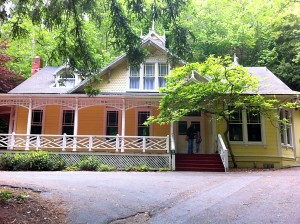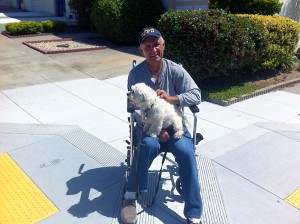 I felt that I couldn’t talk about a burger joint yesterday without giving some time to that venerable processed tubular meat product known as the Hot Dog. I wrote an article some time ago about Treasure Island Hot Dogs that I couldn’t find very much info on, but Uncle Frank from the Hot Dog Hall of Fame [yes there is one] who mentioned Schwarz Sausage Company of San Francisco so I did a little more digging.
I felt that I couldn’t talk about a burger joint yesterday without giving some time to that venerable processed tubular meat product known as the Hot Dog. I wrote an article some time ago about Treasure Island Hot Dogs that I couldn’t find very much info on, but Uncle Frank from the Hot Dog Hall of Fame [yes there is one] who mentioned Schwarz Sausage Company of San Francisco so I did a little more digging.
While the Hamburger originated in Hamburg, Germany by Russian traders who brought their habit of eating raw minced meat [ala steak tartare] the Hot Dog started it’s life in Frankfurt, Germany as well as Vienna, Austria [where the name weiner comes from]. It wasn’t until Germans brought them to America that some schmuck here got the idea of wrapping them in bread so you didn’t burn your hands while walking around eating them.
The Hot Dog predates the origin of the Hamburger in the U.S. by a number of years and it has spread all over the U.S. in various forms creating localized renditions through out the country. It was here that I had to start my search. If they are everywhere what would make them so special to San Francisco? We have dungeoness crab that while you can find it all up and down the coast, it tastes different here. Then of course there’s sourdough bread that only can exist here because of our local bacteria that even if you got some starter and were using it in another part of the country it would last you a couple of weeks and then it would be gone.
So what is so San Francisco about the Hot Dog? Well as it turns out if you’ve ever gone to a local sporting event and purchased a hot dog [not sushi and chardonnay] you probably had a Schwarz Sausage Company hot dog. They began life in a part of the Mission District sometime around 1911 in a part that was known as Germantown. That was the first I had heard of a Germantown being in San Francisco, but we are a city of change after all. There was also Casper’s Hot Dogs, but they actually started in San Leandro in 1934 so their close, but no hot dog, er, cigar.
Schwarz also was a big supplier of the public schools so those hot dogs you ate growing up here were probably from Schwarz. They make several types and not just the all beef type, but they also have some with pork and veal inside and while I tend to gloss over the hot dog at times as being more about what you put on it than in it, you can taste a difference between them. While Schwarz has been bought by Engelhart Gourmet Foods and moved to Fairfield, CA they still have a consumer outlet in the part of Mission that’s referred to now as La Lengua.
Say, did I just say sometime in Spanish? Well the San Francisco experience for hot dogs is usually found by street vendors in the Mission who sell grilled hot dogs wrapped in bacon. Apparently the Mexican immigrants brought that from Mexico and it has caught on here at least in the Mission. We don’t have too many hot dog joints and when you do find them they’re more fast food than localized. The best place [in my opinion] to get a hot dog is from a hot dog stand. While I have grown over the years learning to put different things on a hot dog [note I used to put only mayo on a hot dog that would creep out anyone who watched me do it and eat it] I’ve found that grilled hot dogs never did it for me. Now if you wrap it in bacon that changes things because the bacon fat would keep the hot dog from blistering and well, as we all know, everything is better with bacon.
Note that if the danger dogs from a Mission Street cart scare you there’s always the palace of tubular meat products, the Rosamunde Sausage Grill that makes it smothered in onions called the Mission Street that I notice is available at every location except the Haight Street location. Well, at least they have it at their Mission Street location.




